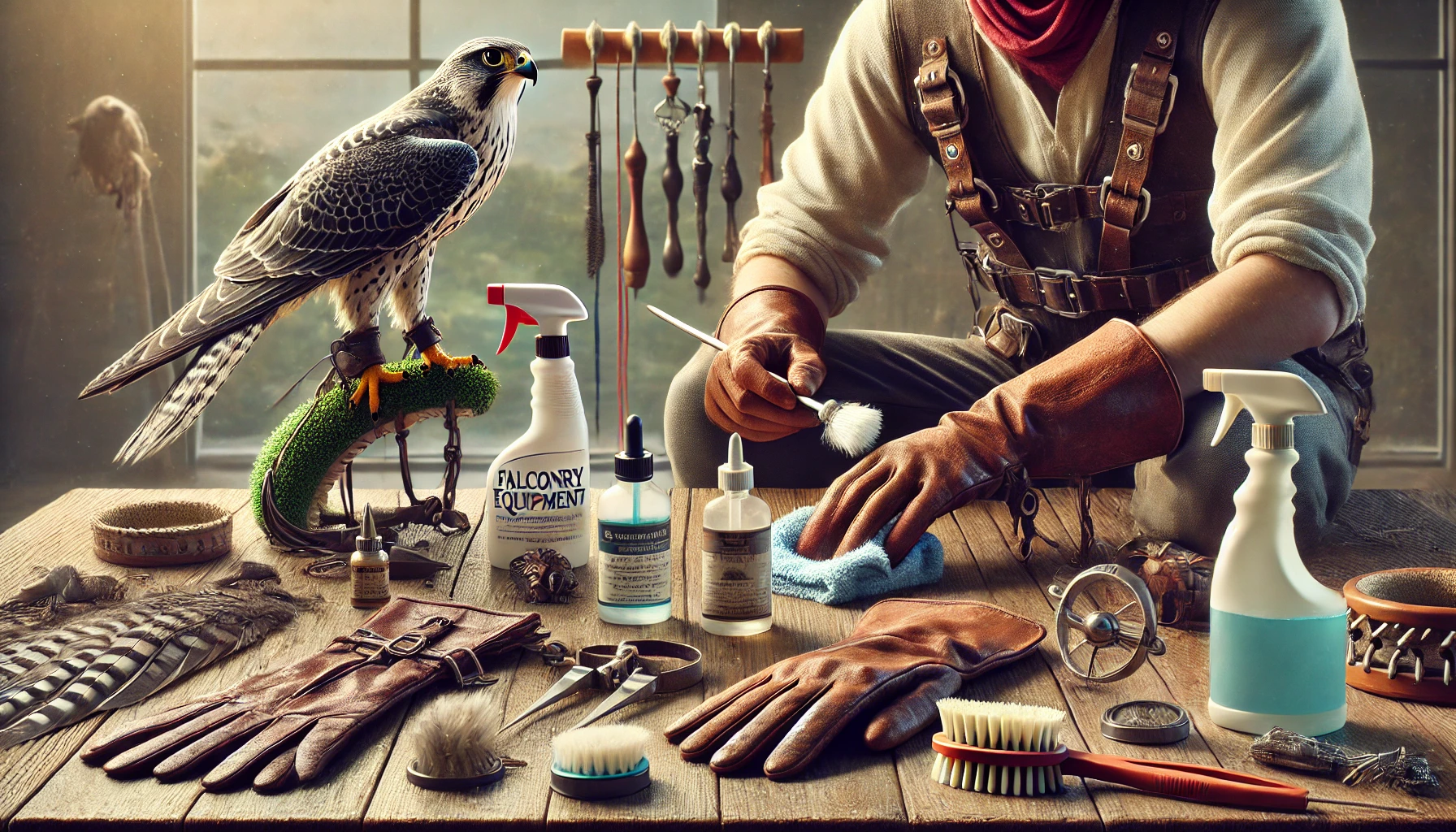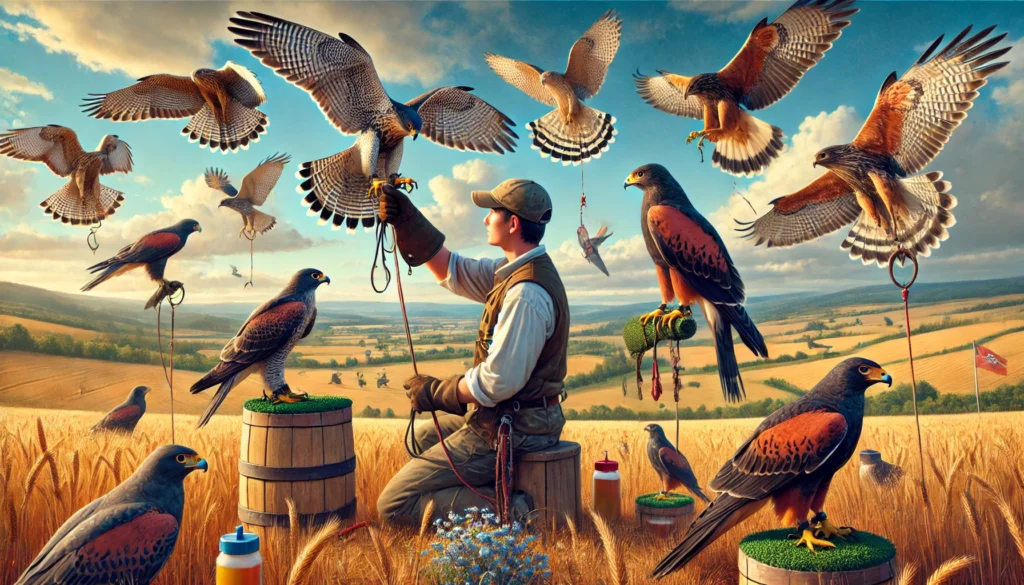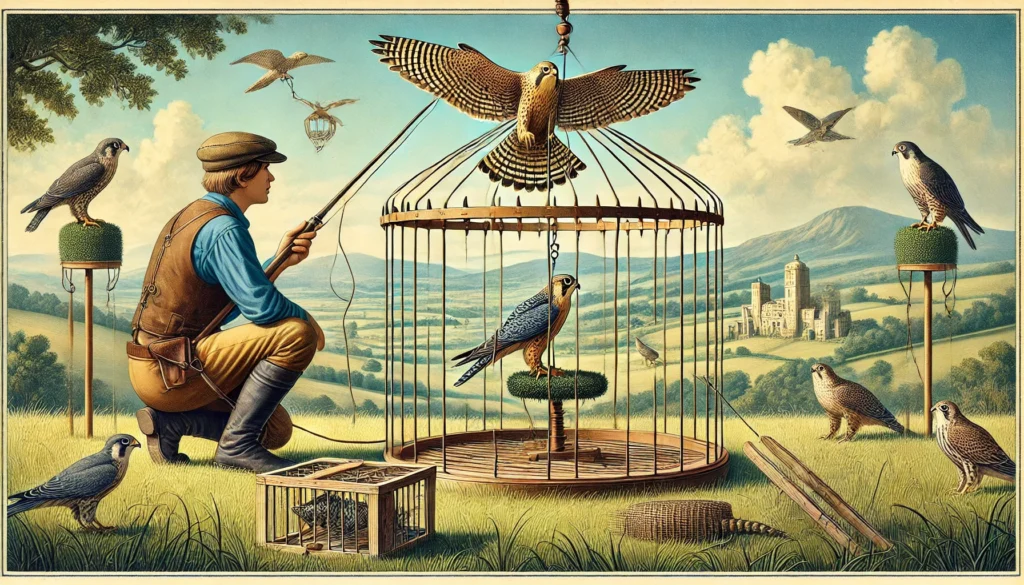Falconry is a rewarding pursuit that requires dedication and proper care for your birds. Keeping your equipment clean and well-maintained is crucial for the health and safety of your raptors. In this guide, we’ll explore the essential cleaning and maintenance tools every falconer should have in their toolkit. From basic supplies to specialized equipment, we’ll cover everything you need to keep your falconry gear in top condition.
Here are the key takeaway points:
- Regular cleaning and maintenance of falconry gear is essential
- Proper storage in dry, well-ventilated areas prevents damage
- Frequent inspection of all equipment helps identify wear and tear
- Leather items require special care to stay supple and durable
- Proper handling and protection from extreme conditions extends gear life
Falconry 101: Essential Tools for Keeping Your Bird of Prey Happy and Healthy
Ever wondered what it takes to keep a majestic falcon in tip-top shape? Well, you’re in for a treat! Just like how we need our trusty toothbrush and comb, our feathered friends have their own set of must-have grooming gadgets. And trust me, these aren’t your everyday pet supplies!
In this article, we’re diving beak-first into the fascinating world of falconry maintenance tools. From beak trimmers that’d make any bird feel like they’re at a spa, to special brushes that’ll have your falcon’s feathers gleaming, we’ve got it all covered.
But why should you keep reading? Well, here’s the thing: proper tool use isn’t just about keeping your bird looking good (although, who doesn’t love a dapper falcon?). It’s about their health, happiness, and even your safety as a falconer. Plus, you’ll pick up some cool falconry lingo to impress your friends!
So, whether you’re a seasoned falconer or just bird-curious, stick around. We’re about to unravel the secrets of falcon care that’ll have you looking at your own hairbrush in a whole new light!
Cleaning and Maintaining Falconry Tools
Proper care and maintenance of your falconry equipment are crucial for the safety and well-being of your bird, as well as the longevity of your gear. Let’s explore the essential aspects of cleaning and maintaining your falconry tools.
What Tools Are Needed for Falcon Care and Maintenance?
To keep your falconry equipment in top condition, you’ll need:
- Soft-bristled brushes
- Mild soap or specialized leather cleaner
- Leather conditioner
- Clean cloths
- Disinfectant spray
- Small scissors or trimmers
- Replacement parts (e.g., swivels, grommets)
How to Clean Falconry Equipment Properly
Cleaning your falconry gear regularly is essential. Here’s how to do it:
- Inspect all equipment for wear and tear.
- Brush off dirt and debris from leather items.
- Clean leather with a damp cloth and mild soap.
- Use a specialized cleaner for synthetic materials.
- Rinse thoroughly and air dry away from direct sunlight.
- Apply leather conditioner to prevent cracking.
Remember to clean your jesses and leashes after each use to prevent buildup of dirt and potential health issues for your falcon.
What’s the Best Way to Maintain Falconry Gear?
Maintaining your falconry gear involves regular care and proper storage:
- Store equipment in a cool, dry place away from direct sunlight.
- Keep leather items conditioned to prevent drying and cracking.
- Check and replace worn parts regularly, such as swivels or grommets.
- Clean and disinfect perches and stands weekly.
- Inspect hoods for proper fit and condition.
- Keep bells and telemetry equipment clean and functioning.
Regular maintenance not only extends the life of your gear but also ensures the safety of your falcon during training and hunting sessions.
How Often Should Falconry Equipment Be Replaced?
The frequency of replacing falconry equipment depends on usage and wear:
- Jesses and anklets: Every 6-12 months or when showing signs of wear
- Leashes: Annually or when frayed
- Gloves: Every 1-2 years or when worn thin
- Hoods: Every 2-3 years or when misshapen
- Perches: When showing signs of instability or wear
Final Thoughts
Always prioritize your falcon’s safety by replacing equipment before it becomes a risk. Regular inspections during your cleaning and maintenance routine will help you identify when items need replacement.
By following these guidelines and incorporating them into your regular falconry practices, you’ll ensure that your equipment remains in excellent condition, providing a safe and effective environment for your falcon.
Proper cleaning and maintenance of your falconry tools are essential for both your bird’s health and the longevity of your equipment. Regular cleaning, careful inspection, and proper storage are key to keeping your gear in top condition. Remember:
- Clean tools after each use to prevent buildup of dirt and parasites
- Inspect equipment regularly for signs of wear or damage
- Store tools properly in a cool, dry place to avoid rust and deterioration
- Replace worn or damaged items promptly to ensure safety
By following these simple steps, you’ll not only extend the life of your falconry tools but also provide a safer, more hygienic environment for your raptor. Ultimately, well-maintained equipment leads to a more enjoyable and successful falconry experience for both you and your bird.



